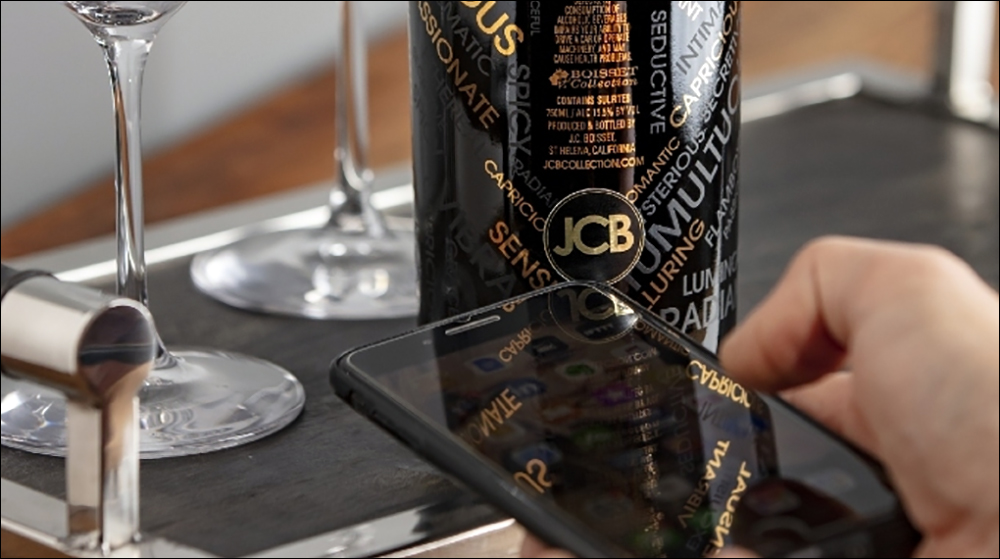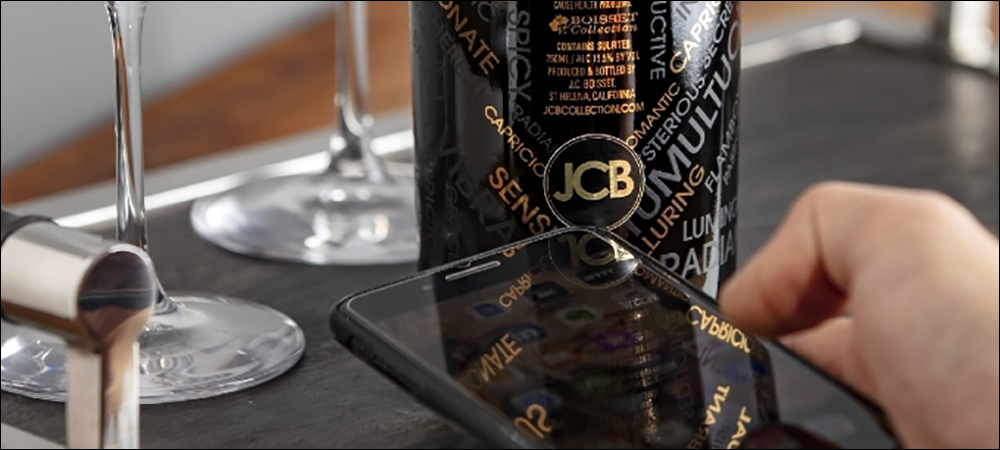Wine company JCB Collection has a taste for the finest in Old and New World wines, but more recently, it has developed an interest in the latest technology. Its founder, Jean-Charles Boisset, is intrigued with how customers can experience his company’s wine digitally to enhance their understanding of how the product is made, and how it can best be enjoyed. So when he met with Amir Khoshniyati, Avery Dennison‘s head of business for Near Field Communication (NFC), over a glass of wine at his tasting room in Yountville, Calif., Boisset was fascinated with the company’s NFC labels.
Boisset discovered that the labels, if applied to a bottle of wine, could quickly transmit content to a wine enthusiast’s mobile phone. As a result, JCB became one of the earliest adopters of NFC-based technology for wine on a product-wide scale, enabling its customers to experience its Passion wine digitally with the tap of a phone. The Boisset Collection is among the world’s largest family-owned fine wine companies. Its JCB Collection is one line under that umbrella, led by Boisset, who has moved to Napa Valley, Calif., form his home in Burgundy, France.

JCB has made wines that are sampled at its St. Helena site for 10 years, as well as in Yountville for six years. JCB Collection is designed to bring together the Old and New Worlds of winemaking, Boisset says, celebrating both his French heritage and his passion for New World California wines. Each product in the collection is a limited edition, named with a number that signifies the wine style. The Passion bottle, however, is unique in that it does not fit into a number category and is only known by its name. The wine is a blend of five grapes that, according to the label, “manages to do it all.”
Khoshniyati recalls his first April visit to the Boisset tasting salon in Yountville, accompanied by a mutual friend of both men. “He [Boisset] happened to be there,” he says, “so he came and sat with us.” Boisset told them the story of his wines and asked the Avery Dennison executive about his own line of work. Khoshniyati asked, “Have you heard of NFC?” Boisset recalls his response: “I said, ‘Of course not!'”

Jean-Charles Boisset
Khoshniyati took out a pre-encoded Avery Dennison Smartrac Circus tag with a an NXP NTAG chip, which he carries in his wallet, and attached it to the bottle of wine they were sampling. He then used his phone to link the tag’s ID number to the JCB website. Boisset says he was impressed, adding, “It was so simple: you put your phone right there, next to the label, and ‘bang,'” content appeared on the phone. The following Monday, planning began for a full deployment of the technology at the winery.
In May, The Boisset Collection released its Passion wine, leveraging Avery Dennison’s NFC-enabled tag, which is being attached to every bottle in that brand. Connoisseurs can tap their smartphone on the label to view a personalized video message from Boisset, along with other exclusive content, such as a particular wine’s origin, tasting notes and scores, as well as how to become a member. The solution consists of a Smartrac Circus tag with an NTAG 213 IC, a digital-identity platform known as atma.io, and the Omni cloud-based supply chain transparent solution, provided by Boisset’s partner, blockchain technology company SUKU.
Initially, a JCB-branded NFC sticker is being applied to bottles available for VIP guests of the tasting salon. This summer, however, Passion wine will be available for sale worldwide, with a dedicated NFC-embedded back label. To ensure the system can ramp up quickly, Avery Dennison is providing the tags, pre-encoded using the atma.io platform. When a smartphone reads a tag, the user is directed to the digital-identity platform, which authenticates the tag and redirects it to the SUKU platform, where the company can create the experience content. Each tag ID transaction can be stored on a ledger in the blockchain.
SUKU’s blockchain-based platform adds a level of assurance in authentication, Khoshniyati explains, but in the future, it could also provide product provenance related to the sequence of events regarding the harvesting of grapes, mixology and bottling. Over time, that data could be captured during every new iteration and stored in the blockchain for an immutable record related to each bottle, If the wine is auctioned off or diverted from the supply chain, that information would be stored digitally on the blockchain ledger to provide a level of security and authentication.

Amir Khoshniyati
Initially, Boisset says he is using the label simply to provide an experience for wine lovers. The Yountville tasting room, which recently reopened following pandemic-based shutdowns, includes a retail store for JCB’s jewelery, candles, perfumes, accessories and wines. It’s quite the experience to physically be there, he says, and the NFC tag is intended to bring that experience to anyone tapping the tag.
The winery features multiple tasting rooms and a variety of sensory experiences, and users can blend their own wines. “We see, every time people walk through the door, their faces light up,” Boisset says. The company hopes the NFC label solution will bring that same sense of delight to those who aren’t able to visit Napa Valley. “It’s a very exciting thing when you can bring technology to the wine world and allow the guests, as they enjoy our wine, to dive into greater knowledge, education and entertainment with their phone.” While the NFC label could also enable wine authentication, that functionality is not yet a concern for Boisset.
“The focus is more about experience,” says Patrick Egan, The Boisset Collection’s VP of marketing and communications.” The company can change content at any time, he explains, adding, “We can provide content that’s 100 percent unique, so the experience will evolve over time.” While Boisset knows NFC is not a new technology, he sees it as a step ahead for the wine world. “We are the only ones today to have done it [on a wide scale] for the wine world,” he states. “I’m excited about that.”

Patrick Egan
Other members of the wine and spirits industry have piloted or deployed NFC solutions for content delivery to consumers on a relatively small scale for years. But until now, Khoshniyati claims, ramping up a tagging program for an entire line of wines has not been accomplished. The industry has lacked a common understanding of how to work tagging into the bottling and labeling processes, he says, such as determining on what part of the bottle and at what point in the supply chain tags should be applied. With the JCB deployment, which is expected to expand across all of the company’s wines, “It opens more doors for others to adopt the technology,” he says.
JCB Collection also sells unique fine jewelry and fragrances, and it may use the NFC technology to bring content to customers of those products as well. The company’s tasting salon was designed to provide a sensory experience, Boisset says, adding, “We believe the wine world is a catalyst to opening your senses—to get to know yourself better, through your nose and through your palette.” He believes the NFC-based content could provide some of that same experience.
Down the line, Boisset envisions creating a traveling salon that uses virtual content to recreate the California tasting rooms, similar to the touring exhibition Van Gogh: The Immersive Experience. “Our dream is to have a traveling, high-tech exhibition that brings you into the world of wine,” he says, and to use technologies such as NFC to help deliver that experience. The NFC technology has already increased sales of Passion wine at the Yountville site, according to Boisset, as users can now tap a label, learn more about a particular wine and then buy multiple bottles.


